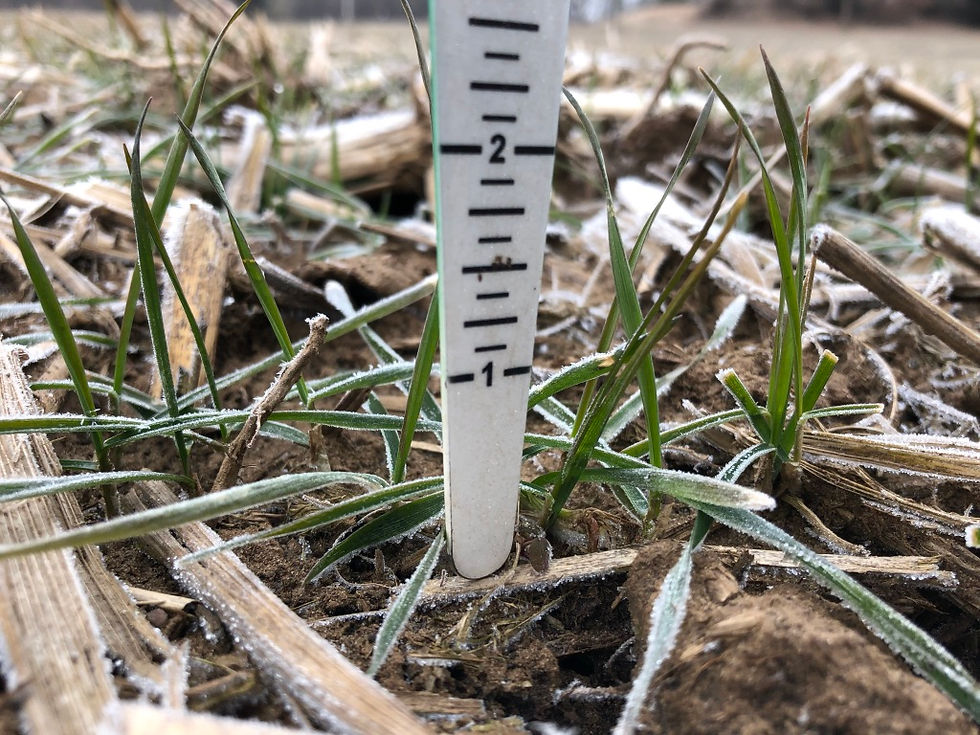“The plans of the diligent lead surely to abundance,
but everyone who is hasty comes only to poverty.” -Proverbs 21:5

We are in a critical time period for wheat development that impacts seeds/head. If more tillers are needed, then it is a priority to manage for more heads/plant. Thus, you may see more updates over then next while. After checking wheat yesterday, it appears there is a range of conditions in our area. The cool winter and cold early spring has reserved the vast majority of growth to the period between emergence and going dormant last fall. So, as can even be seen visually from the road; plant date made a difference on growth and tillers that we have now. Some places we are seeing tillers that had time to put out 4-6 tillers on 45-50 plants/ sq ft and others where we see 2-3 on 22-26 plants/sq ft. This is a broad range in terms of how we should manage this crop.
Chad Lee of the University of Kentucky studied the practices of the top 30 farmer contestants on high yield wheat. He found that:
100% use foliar fungicide
100% use herbicides
97% use foliar insecticide
87% split apply Nitrogen
Nitrogen Due to the cold wet weather inhibiting growth of roots and tillers, a split application of Nitrogen will probably be needed. The exception would be the scenario like was mentioned of 4-6 tillers on 45-50 plants. Again, fall growth and plants/acre or foot drives this decision.
Insects After a cold winter, I have not seen aphids, yet! However, aphids survive in their natural gycerol antifreeze up to -20℉ . With temperatures moving to highs in the 50s and 60s and lows that stay above 32℉, this could change rapidly. Insecticide is the cheap and the only way to prevent aphids from vectoring the barley yellow dwarf virus.
Weeds Winter annuals are starting to wake up and also marestail rosettes. A few more days of sun and warm temperatures will put us to getting a good kill on weeds. Wheat with later planted dates will be smaller increasing competition before mid spring canopy occurs. Wider rows or small plants make herbicide a critical component of yield.
Fungus Beck’s PFR shows that fungicide applied at flowering returned a 4 year $9.98/acre ROI. This impacts our 4th and last ratio we consider in wheat yield: weight/seed. This was with spending $15.00/acre on fungicide before app cost. This application controls Fusarium Head Blight. There are cases in wet years that an application prior to flowering will work. However, PFR has found applying fungicide to wheat prior to flowering has been hit or miss over the years. Keep in mind they were running full rates with costs around $12-17/acre. But, still in some cases the yields were almost even or sometimes less than the control yield. If, it is determined that fungicide is needed, running a ½ rate of Stratego for around $5.00 can be an option when included with your herbicide pass.
Don’t hesitate to call with any questions. Am happy to go over a plan for your specific operation and situation.

